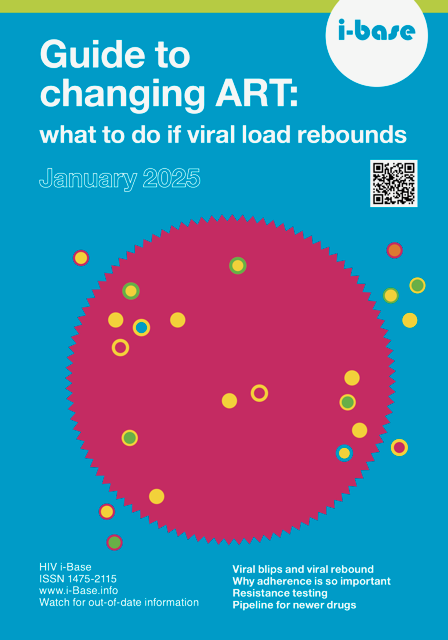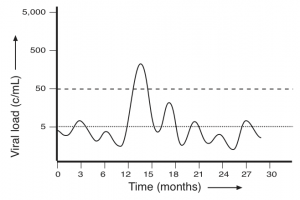Viral load blips
 Viral load blips are very common.
Viral load blips are very common.
A blip is when viral load result is detectable but at a very low level. If checked with a second test, this is usually undetectable again, without any need to change treatment. See Figure 1.
Most blips are not even detected. This is because viral load is usually only tested once or twice a year.
Blip results are usually defined as becoming detectable but staying under 200 copies/mL. But some blips can go above 500 or even 1000 copies/mL. They then go back to being undetectable.
Many very low blip results are just lab errors. If the test cut off is 50 copies/mL, there is no difference between being less than 50 and less than 80. If the undetectable cut off is 20 copies/mL, there is no difference between less than 20 and less than 30 etc.
They can happen with perfect adherence.
Low level blips can be caused by other infections. For example, flu or an STI. A healthy response to a vaccine (such as flu or COVID-19) can also cause a blip.
Figure 1. Viral load blips

A single blip result is common. It does NOT mean you need to change treatment.
A blip is undetectable again on the second test.
Please compare blips to confirmed viral rebound .
Last updated: 1 January 2025.
